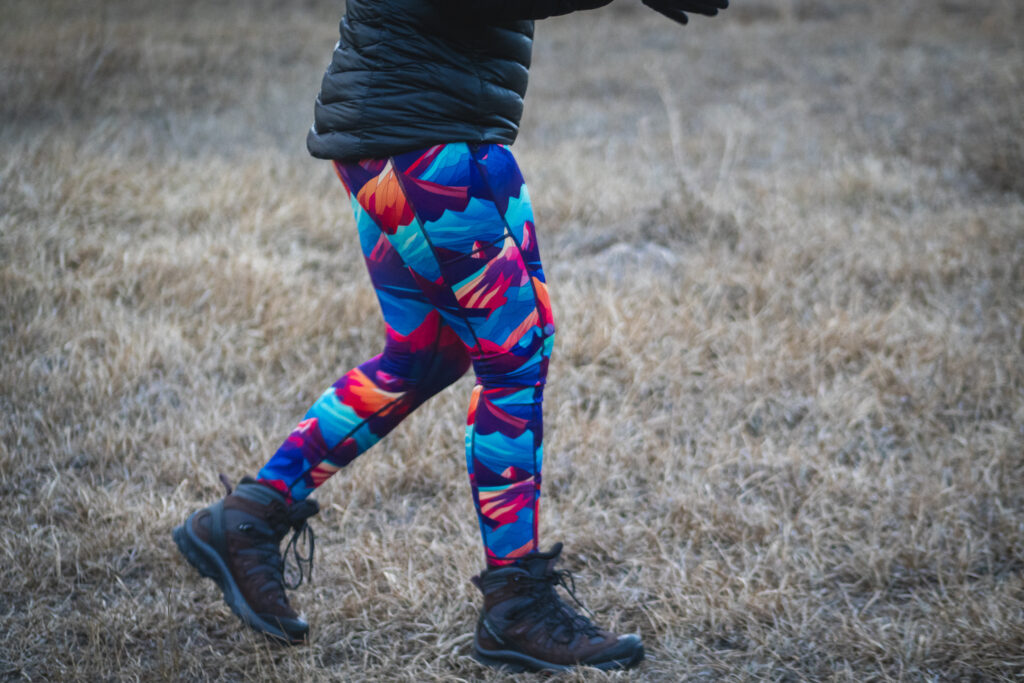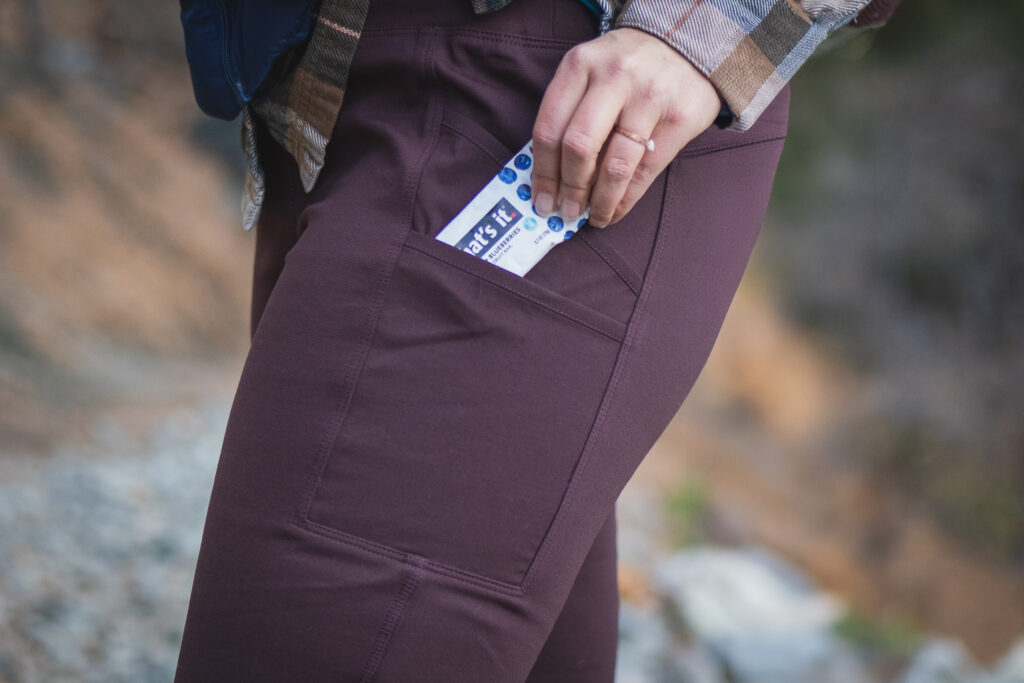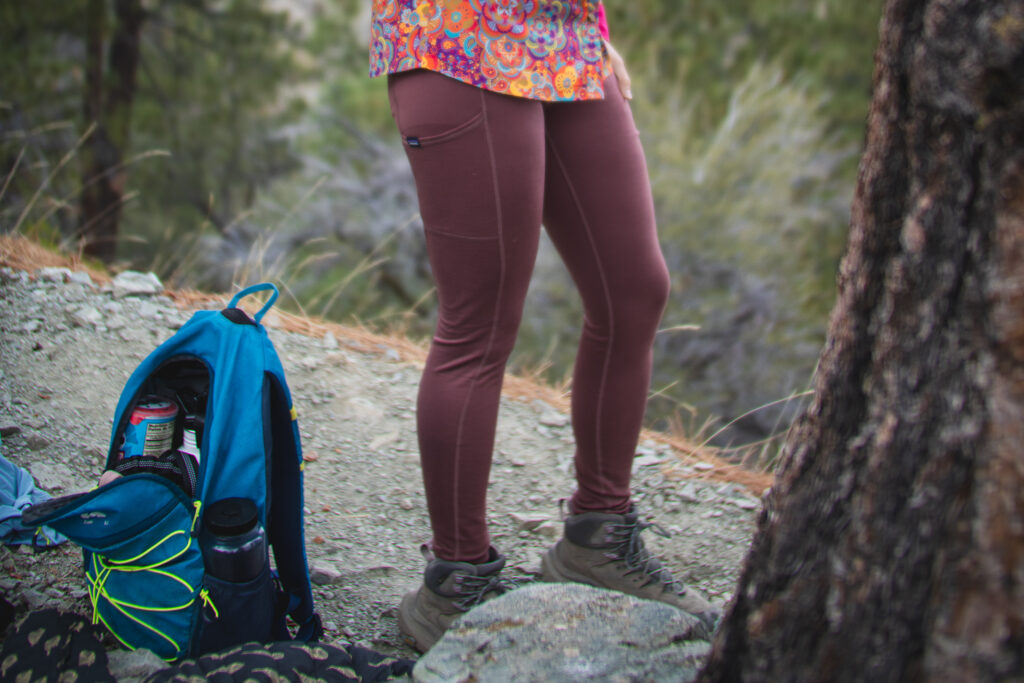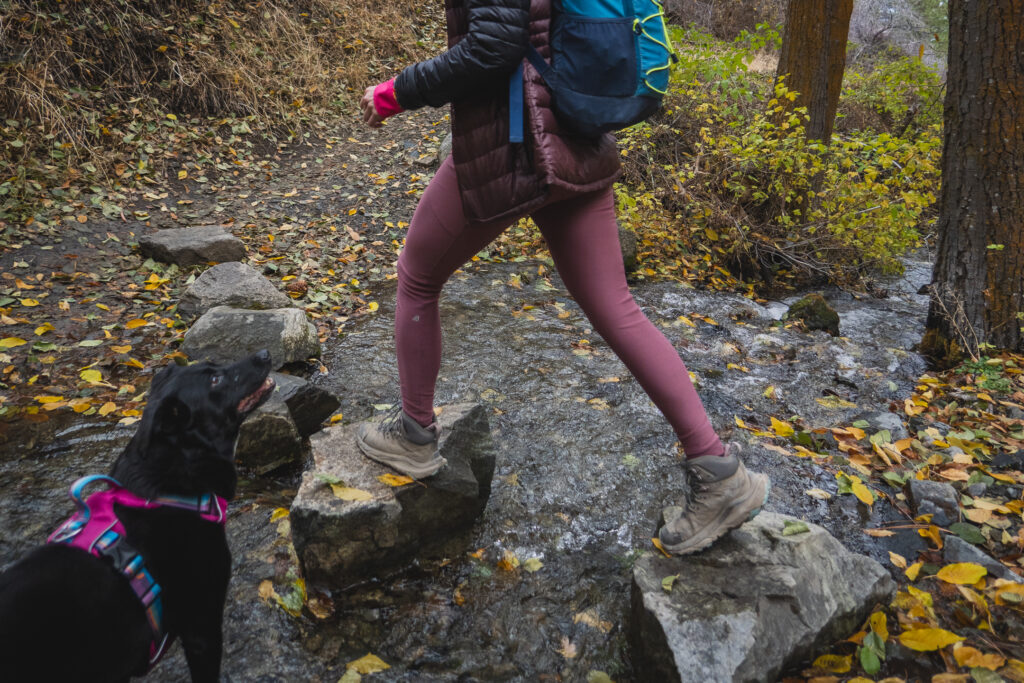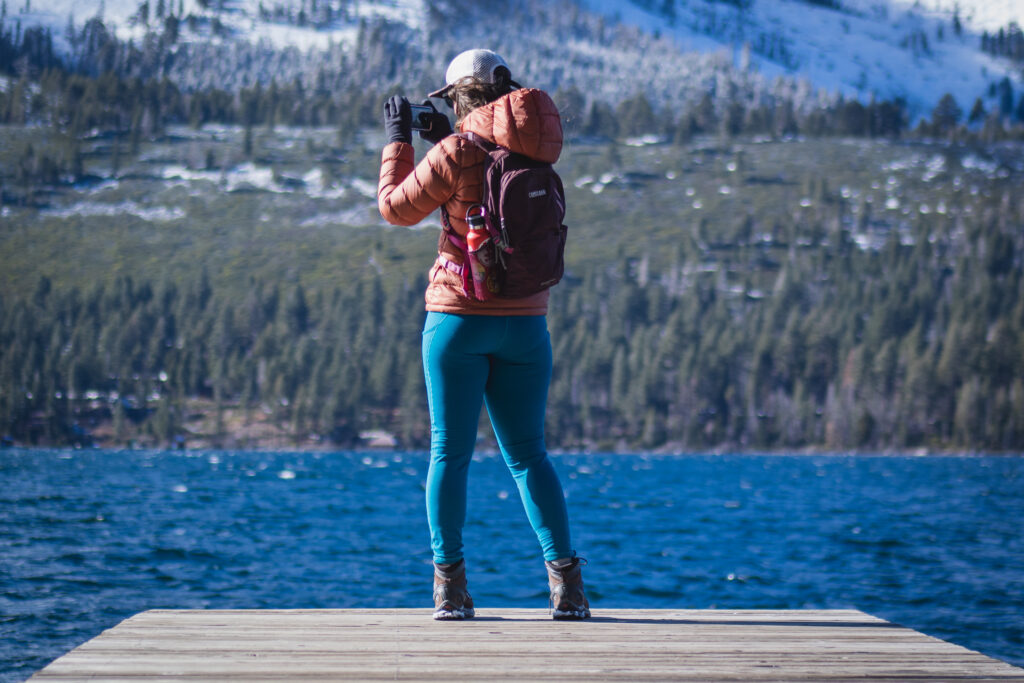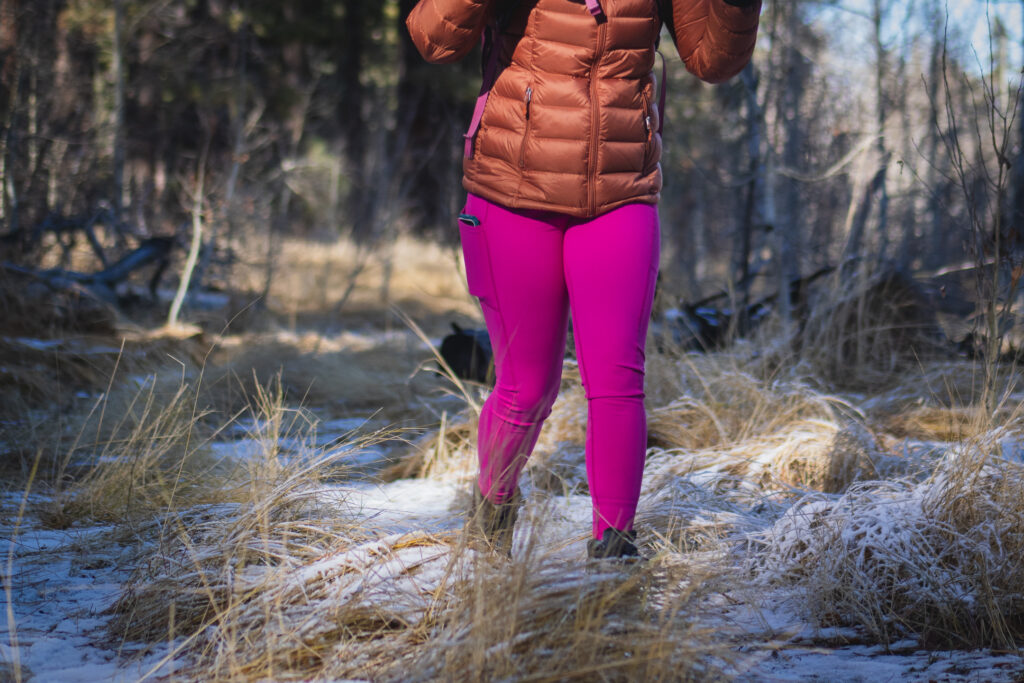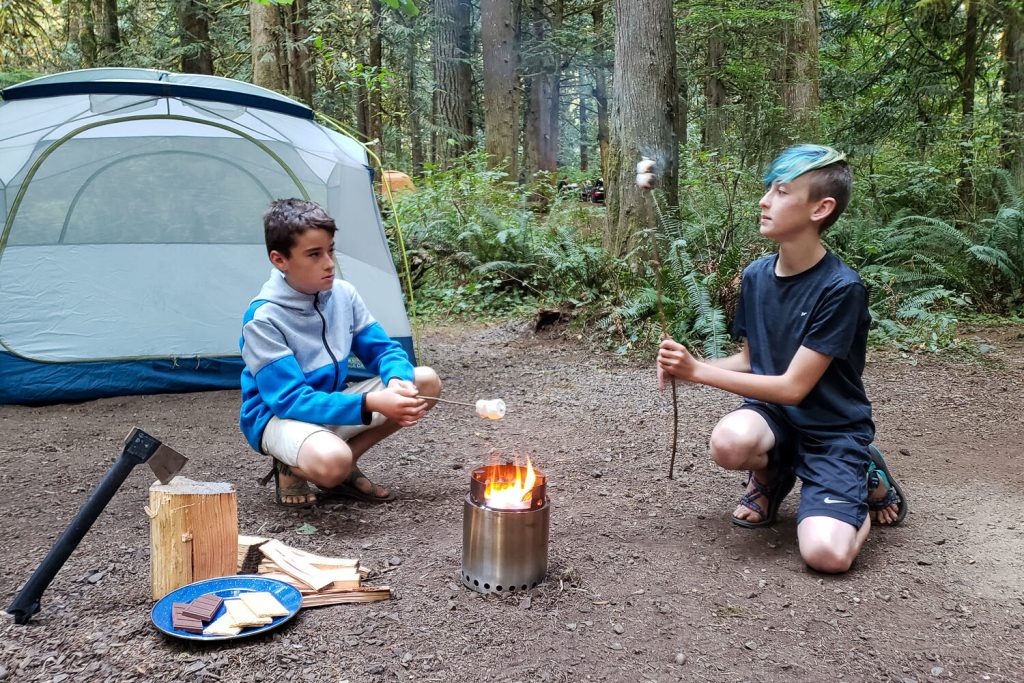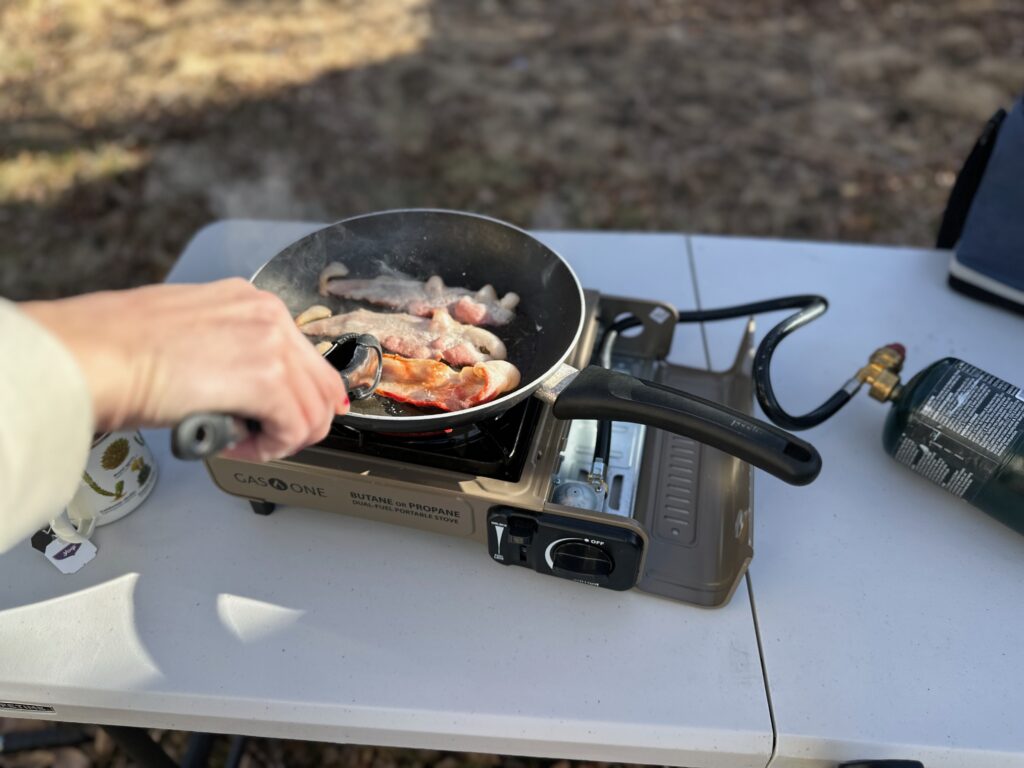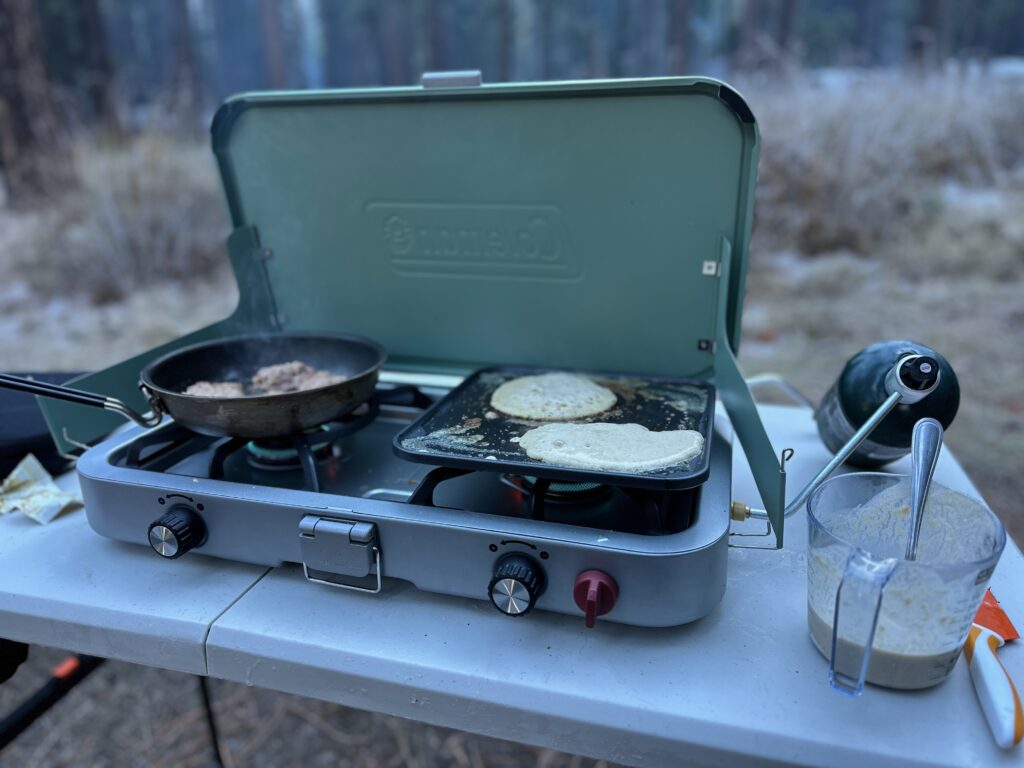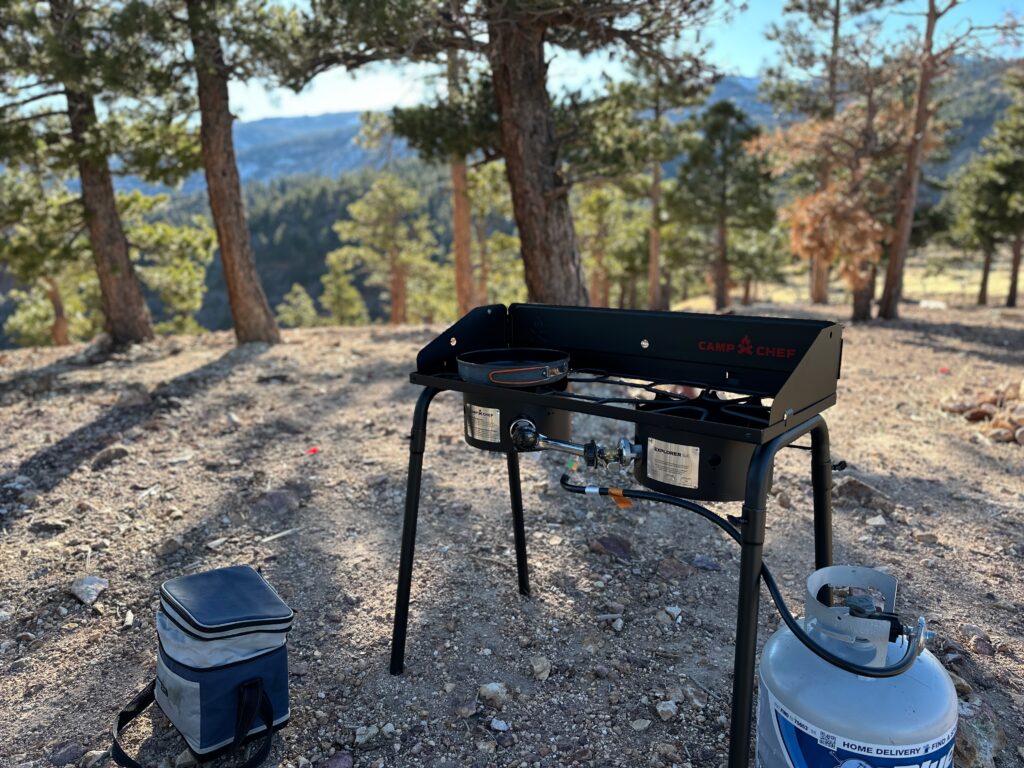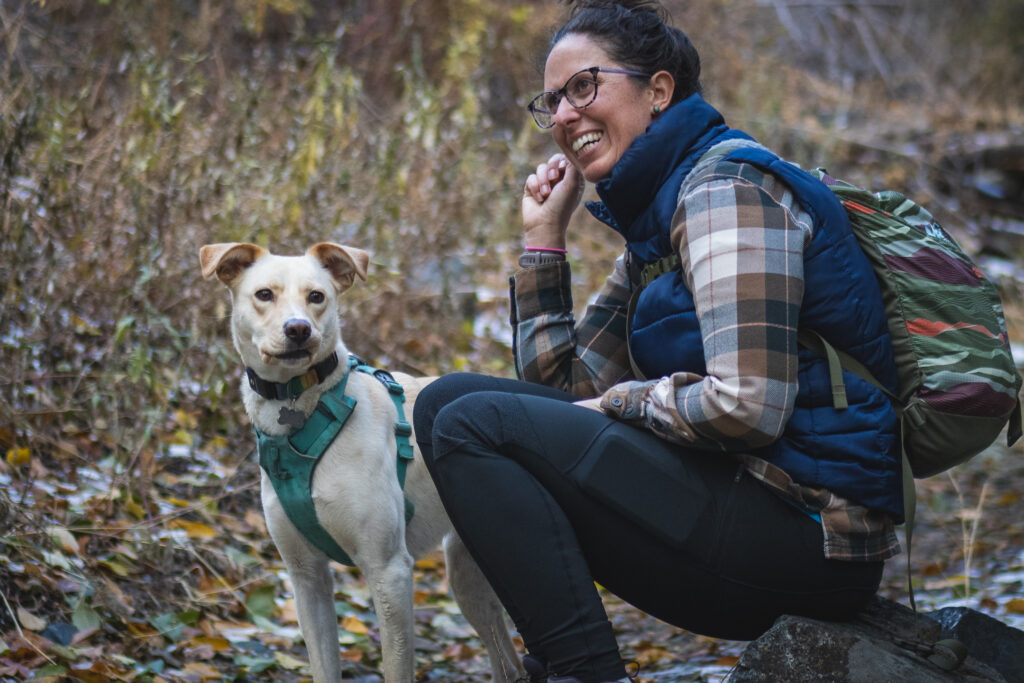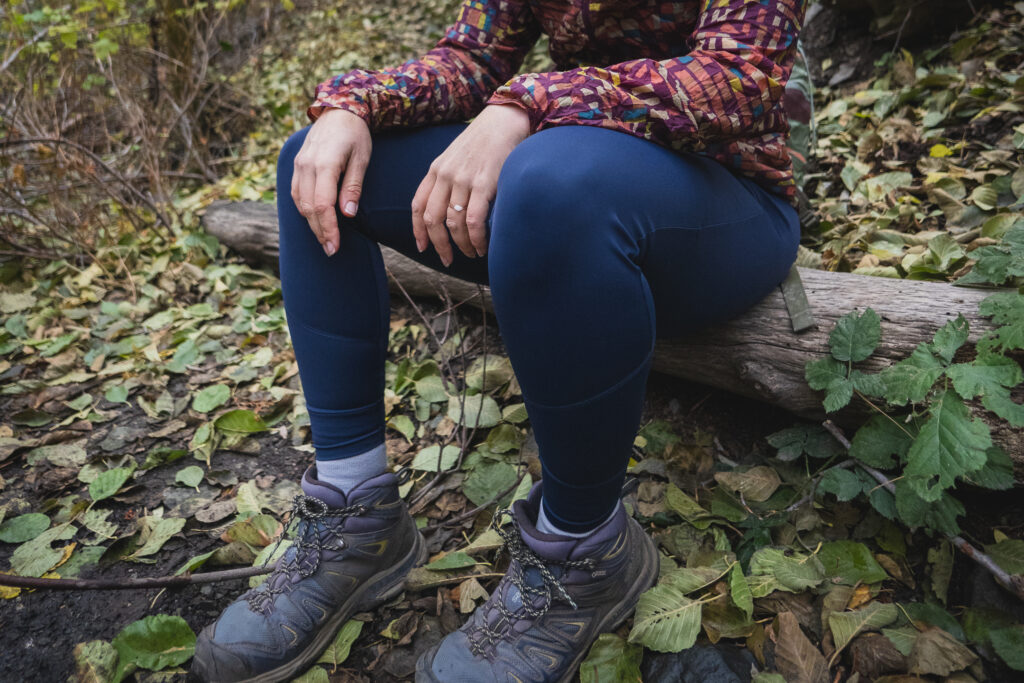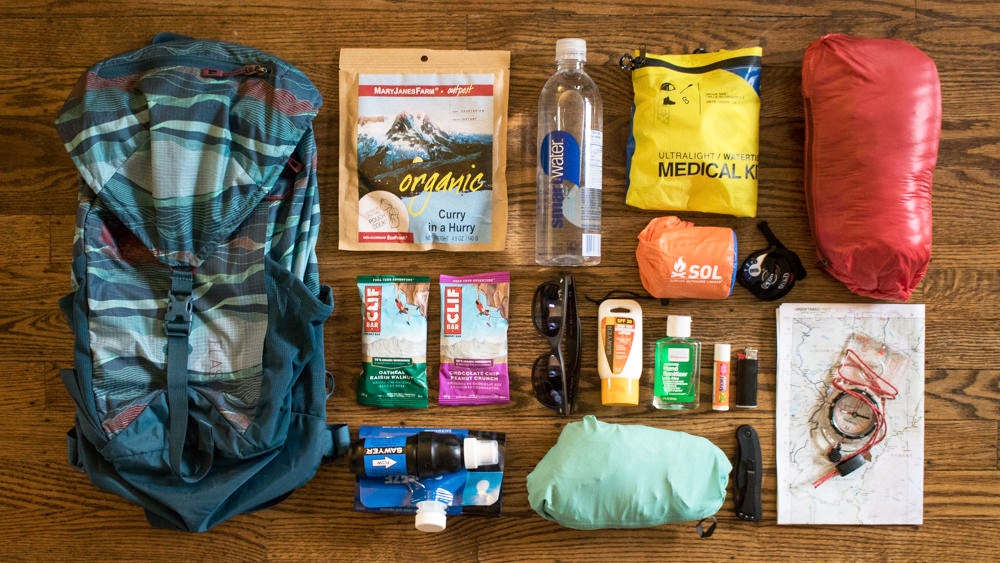
Whether you’re casually hiking to a favorite waterfall or bagging a difficult summit, carrying the proper equipment is absolutely critical. When things go wrong, as they often do, this can mean the difference between a minor inconvenience and a dire result. For first-timers and sage backcountry traveler alike, dialing in essential day hiking gear is an important part of any pre-trip preparations.
In the article below we discuss our opinions and preferences for some of the most critical day hiking equipment. We also take a ton of multi-day backpacking trips, so if you’re interested in checking out our top picks for tents, sleeping bags/pads, backpacks, and a whole lot more, have a look through the CleverHiker Backpacking Gear Guide.

10 Day Hiking Essentials
1. Navigation
A topo map and trusty compass are two navigation components that should accompany you on any trip into the backcountry. They’re reliable, lightweight, durable, and guaranteed to never run out of batteries. They can keep you from getting lost or help you find your way again, but they won’t do any good if you don’t know how to use them. So brush up on how to use a map and compass and how to keep from getting lost before heading out on your next trip. We also recommend keeping your maps in a clear, waterproof map sack to keep them dry and protected.
Though not technically a component of the 10 Essentials List, GPS devices and phone apps (GAIA, TopoMaps, etc) are excellent tools for supplementing a map and compass. If you plan on using GPS regularly, you may want to carry a power bank in case your device runs out of juice. While GPS tools can be very convenient and useful on the trail, they should never fully replace your map and compass.
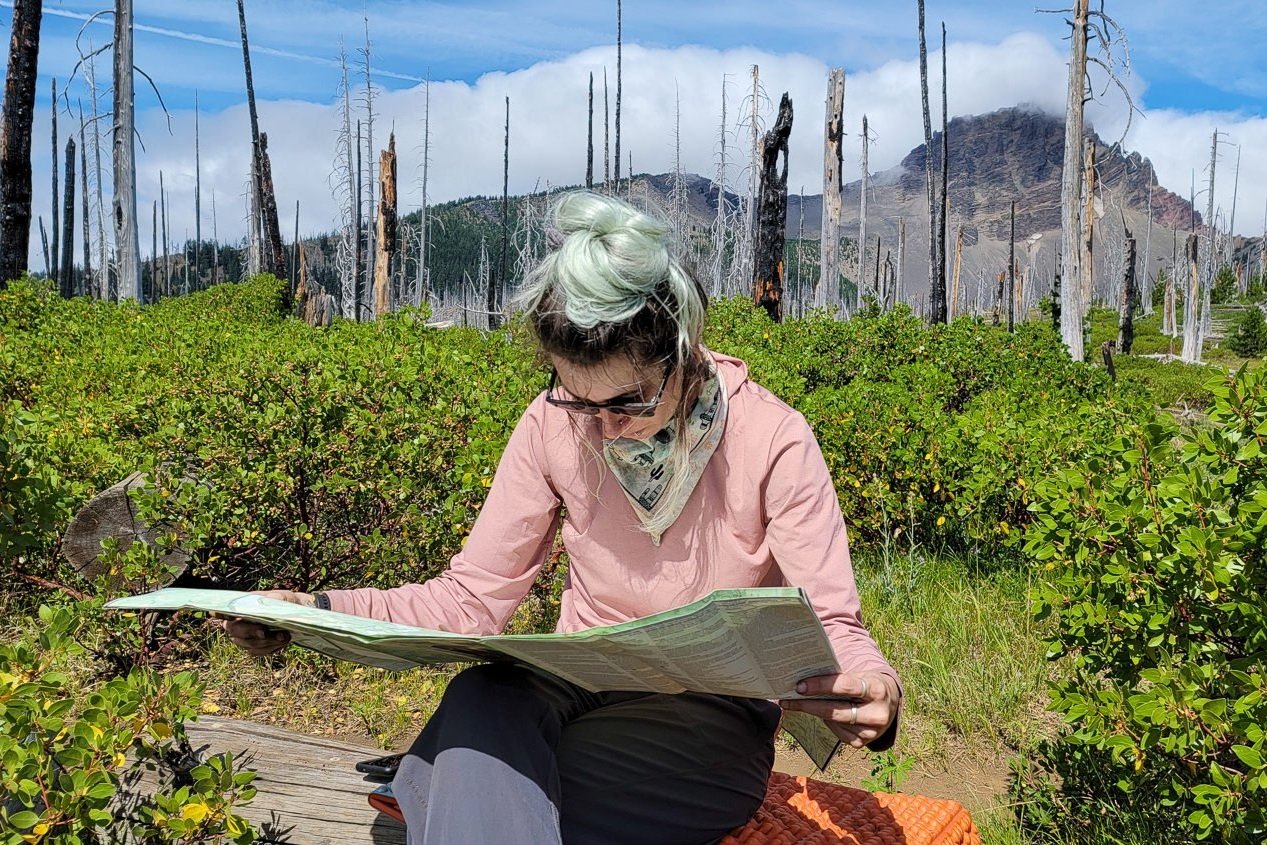
2. Sun Protection
Sun protection is an incredibly important part of any backcountry trip, even when the weather looks cloudy. Sunscreen, SPF lip balm, sunglasses (preferably polarized), a brimmed hat, and protective clothing should be considered essential on every hiking trip. Bad sunburns, bleeding cracked lips, and conditions like snow blindness can be debilitating if proper respect isn’t paid to the sun’s power.
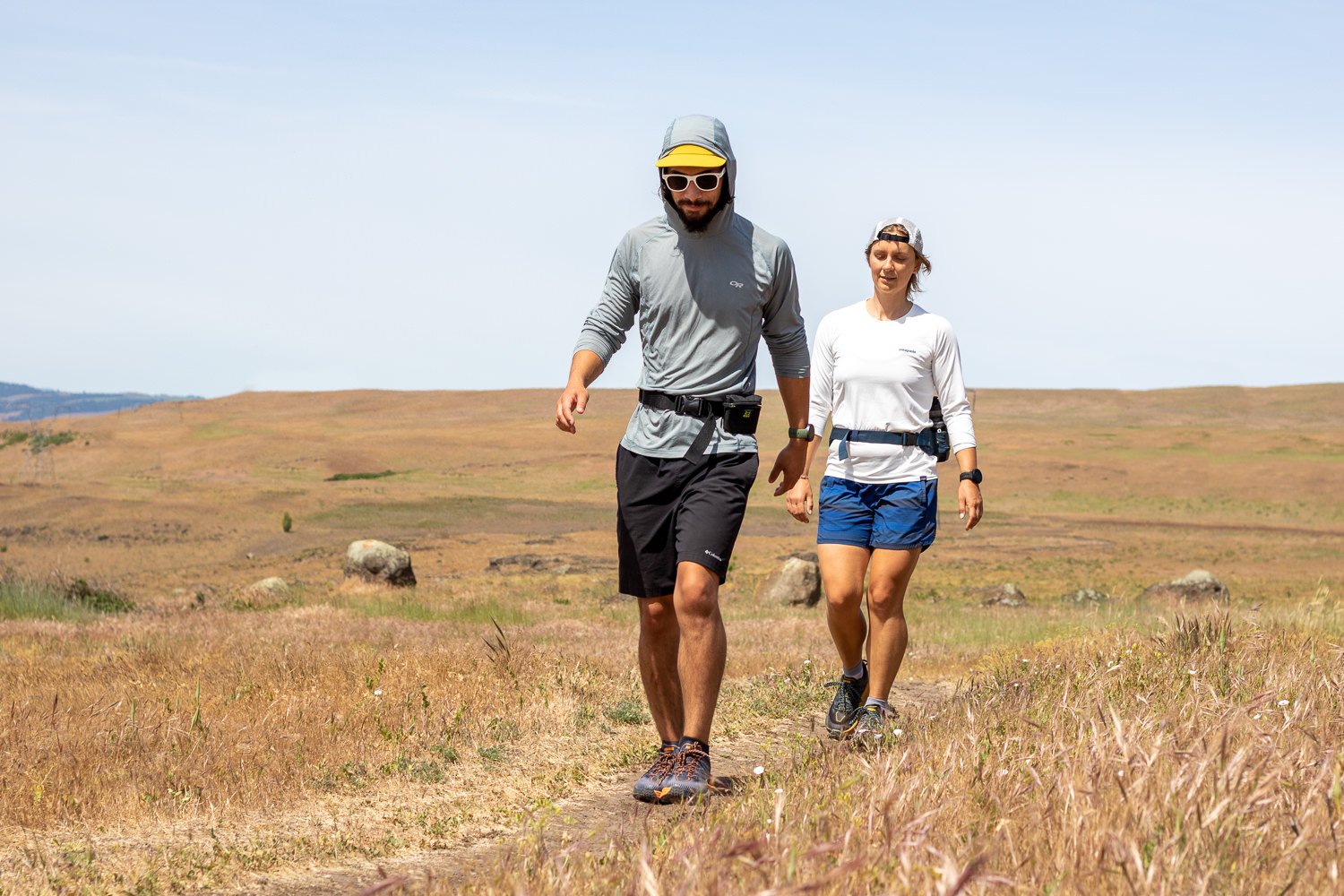
3. Insulation
Weather can change quickly on any wilderness trip, so we always recommend bringing an extra insulation clothing layer – even on warm weather trips. A simple layerable, quick dry clothing system will ensure you’re safe and warm when temps drop. For example, we pack a down hooded jacket and rain protection on almost every hiking trip, regardless of the forecast.
For your clothing system, you’ll want to avoid cotton products, which take a long time to dry and pull heat from your body. Instead, wear quick dry, synthetic layers and manage perspiration to keep your clothing from soaking with sweat. Wet clothing will quickly chill you to the bone as soon as you stop hiking. Check out our post on building a layering system for hiking for more tips.

4. Illumination
We bring a reliable headlamp on every hiking trip, even if we’re not planning on being out past dark. Sometimes a hike will take longer than expected, and getting lost in the dark can quickly compound a bad situation. If you ever do find yourself unexpectedly in the backcountry as daylight is fading, you’ll be happy to have a headlamp to help you find the way home. We usually hike with our phones as well, and their built-in flashlights serve as a good backup light source. Make sure to test your headlamp batteries prior to your hike as well.
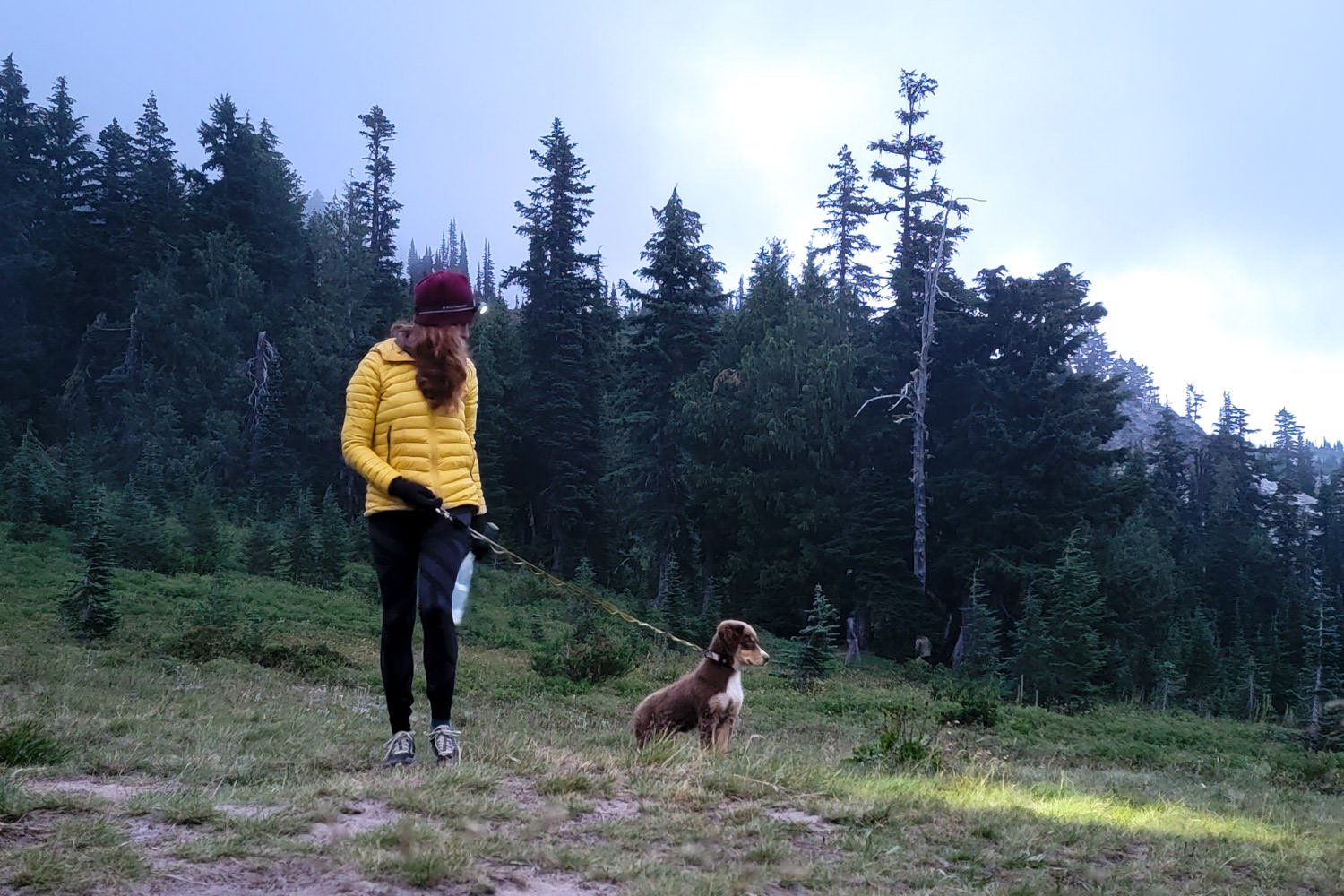
5. First Aid Supplies
When traveling into the backcountry, you’ll always want to carry a comprehensive first aid kit. Most backpackers buy a pre-packaged first aid kit, which will provide a lightweight and reliable setup for minor ailments. As you gain more trail experience you’ll be able to add or subtract from your first aid kit depending on your individual needs. And always make sure to replace anything you use as soon as you return home from your trek. Check out these videos we made to see what’s in our first aid kit and learn some critical wilderness emergency first aid skills.
6. Fire
Knowing how to build a fire in nasty weather can be a life saving backcountry skill. For a quick tutorial, check out this video we made on building fires in harsh conditions. To make a fire as easy as possible, we always bring two small Bic lighters (one is kept in a dry place as a backup), a few stormproof matches, and a few small firestarter cubes. We only use the fire starters when we really need them, but they make fire building much easier, especially in wet conditions.
If you’re looking to go more survivalist style, you can carry a small fire flint, but small lighters tend to work just fine for us. Additionally, some hikers make homemade fire starters, which are cheap and easy to make, but we usually prefer the convenience and ease of the store-bought stuff.
7. Repair Kit & Tools
We bring a lightweight multitool and basic repair equipment on every backcountry trip we take. A simple multi-tool knife, like the Swiss Army Classic, will come in handy in a variety of situations and we use ours all the time on the trail. Duct tape and Tenacious Tape are also excellent tools for repairing gear in the field, so we always hike with a small amount of both in our packs.
Tenacious Tape is great for fixing sleeping pad punctures, tent fabric tears, sleeping bag rips, puffy coat holes, and stuff like that. Duct tape is a great all-around repair tool that can be used for things like splinting a broken tent pole or repairing sunglasses, and it’s even good for preventing blisters when you feel a hot spot on your foot.
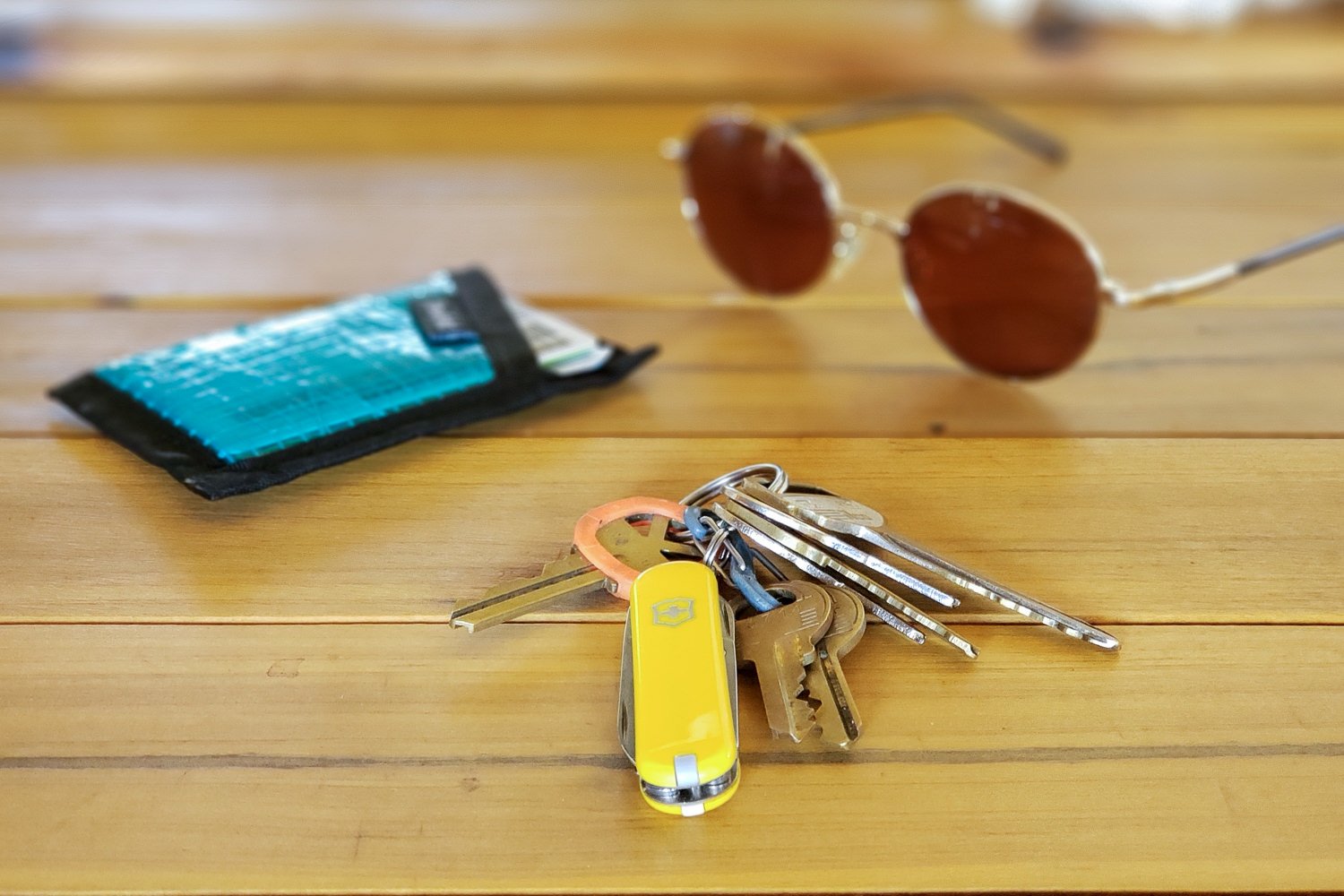
8. Nutrition
When preparing for a hike, you’ll want to make sure to bring along enough calories to sustain your energy for a long day of activity. We commonly snack on energy bars (Larabar, Clif Bar, ProBar, Luna, and Kind bars tend to be our favorites), dried fruits, nuts, and jerky while we hike. For a more substantial lunch, we like to pack tortillas or bagels and make sandwiches with hard meats (like salami) and cheeses (like parmesan).
If you’re headed out on a long hike, we recommend bringing some extra calorically-dense food, just in case your trip takes longer than expected. Check out our Backpacking Food Guide for a bunch more information and recommendations on our favorite trail grub.
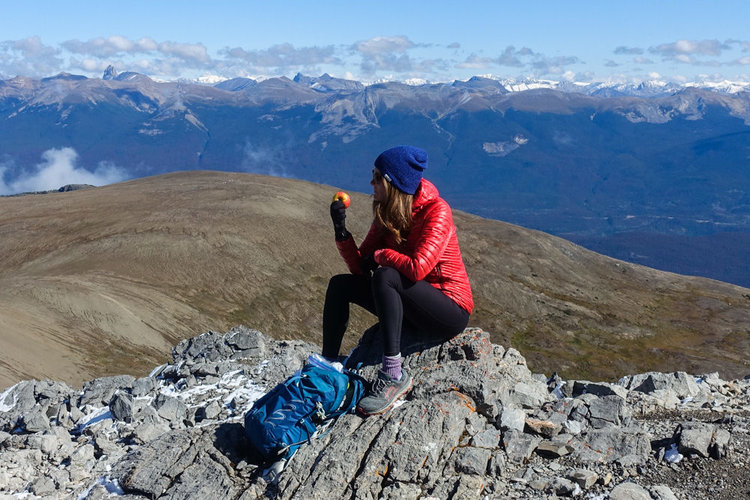
9. Hydration
It’s absolutely essential to stay well hydrated on the trail to keep your body’s critical systems running properly. Water helps cool you down when you’re hot, warm you up when you’re cold, and will keep your muscles and joints working properly to avoid injury while you hike.
Make sure to bring enough water for the duration of your hike, or bring a lightweight water filter and know where water sources will be located along your route. For a 24-hour water supply, one gallon (or 4 liters) is recommended per person. Make sure your water is easily accessible via water bottles or a hydration pack so you can drink freely while you hike.
Also, it’s important to remember that while water is critically important, it’s also one of the heaviest things you’ll carry on the trail. So carrying a bunch of extra water should be avoided as well.
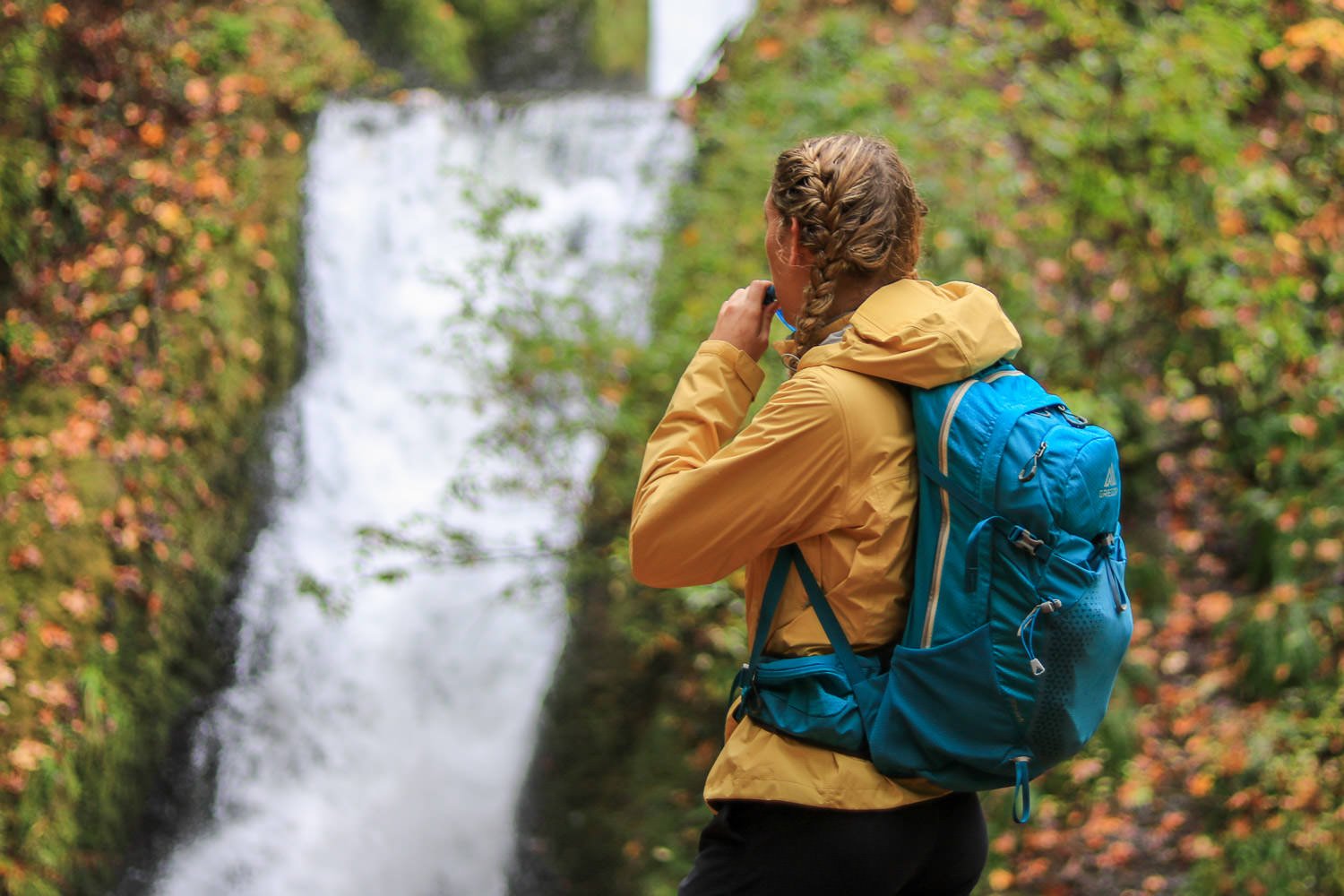
10. Emergency Shelter
If you’re on a multi-day backpacking trip, you’ll already have a shelter in your pack. But for day hiking trips, we recommended bringing a small, lightweight emergency shelter, just in case you unexpectedly have to spend a night outside. Emergency blankets and bivys (we prefer the bivy) are lightweight, affordable options that could potentially save your life if you’re ever in a really bad spot.
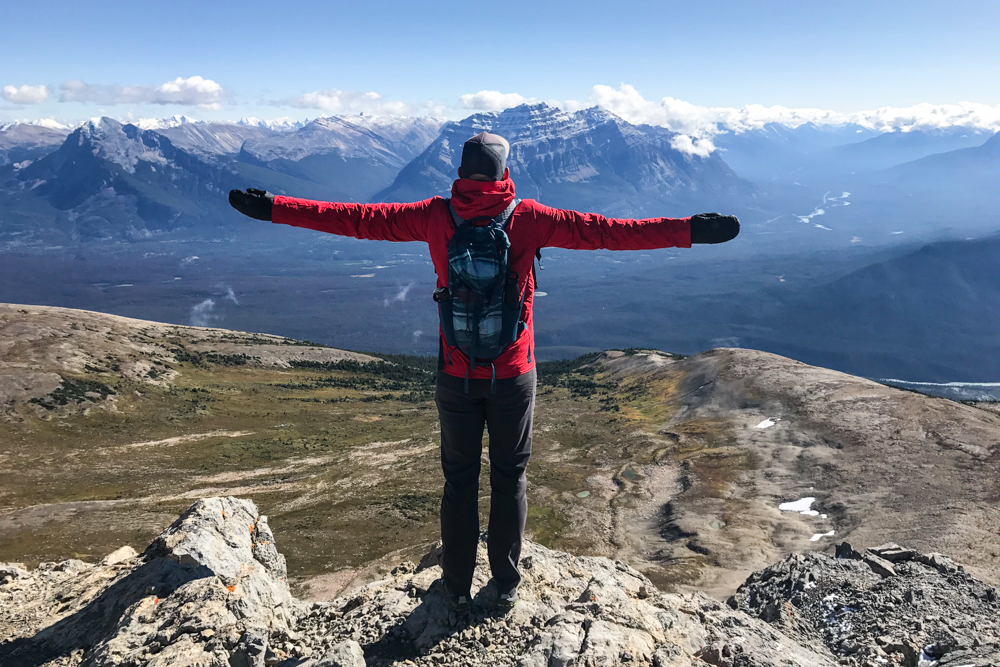
Beyond The Essentials
Daypack
A well-fitting and comfortable daypack is essential for carrying the gear you’ll need in the backcountry. Choose a pack large enough to carry essential gear with convenient storage compartments and easy access to water bottles or a hydration bladder. To learn more about the most important daypack considerations and to see our top recommendations, check out our Best Hiking Daypacks List.
Footwear
We wear trail running shoes on almost every spring, summer, and fall hiking trip we take. Trail runners are comfortable and lightweight, they dry quickly, help us avoid blisters, and provide excellent traction. “But don’t I need hiking boots for water protection, ankle support, and durability?” Not necessarily. If you’re in good shape, have strong ankles, and don’t have a history of nagging injuries, trail running shoes might be the best fit for you too. Check out our article: 5 Reasons To Ditch Your Hiking Boots to learn more.
For us, unless we’re planning to encounter winter snow conditions, trail runners are our hiking footwear of choice. And we haven’t made that decision in haste. We’ve literally hiked thousands of miles through some of the roughest terrain on the planet in trail runners and they fit our needs the best. For more information and some of our trail-tested recommendations, check out our Best Hiking Shoes list.
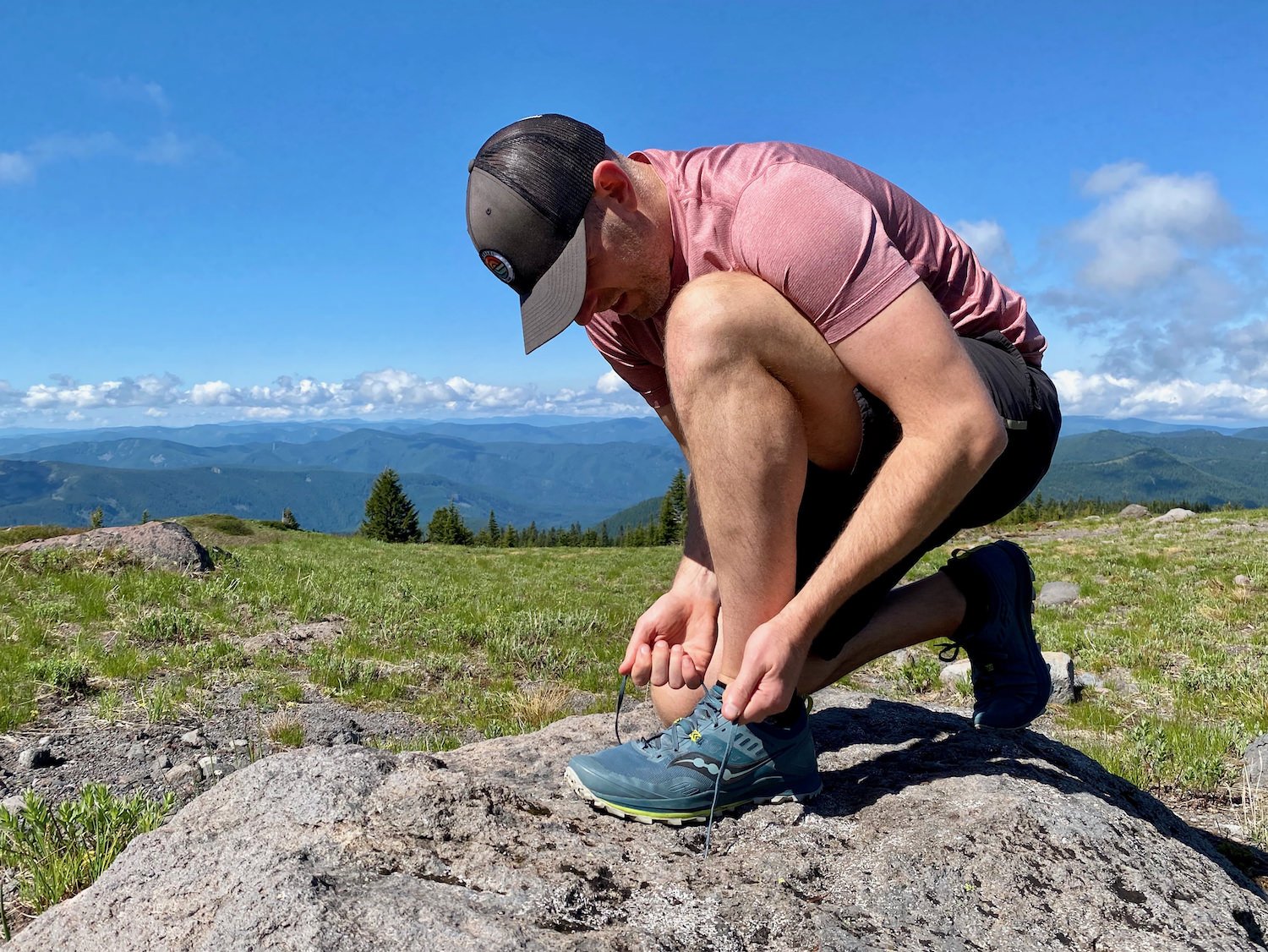
Toilet Paper & Trowel
Dirty toilet paper is the most common form of backcountry litter we find on trails throughout the world. A) Gross. B) Why? The answer is far too many backcountry travelers are not prepared to bury their waste properly. To dispose of human waste the right way, you need to dig a cathole at least 6-8 inches deep before you go, and if you don’t pack a trowel (we currently use this cheap and lightweight snow stake), you won’t be able to dig a hole deep enough. It’s as simple as that. After doing your business, either bury your TP deep in the hole, or pack it out in a Ziploc bag. C’mon people. You love nature. That’s why you’re out there. So educate yourself on Leave No Trace principles and help us keep our wild spaces beautiful for generations to come. Check out our How to Poop in the Woods post for more tips.
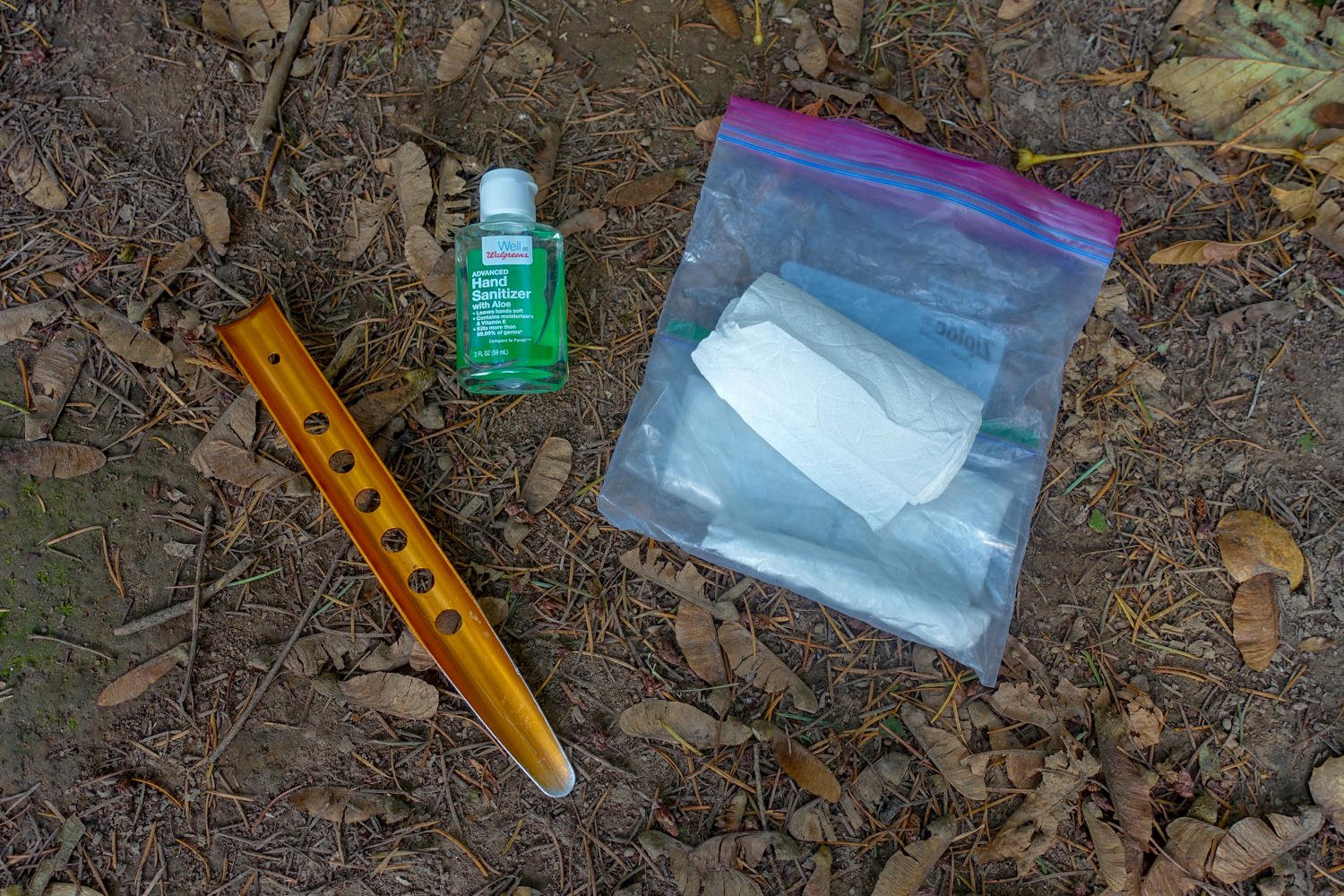
Hand Sanitizer
Dirty hands are the biggest contributor to illness in the backcountry. This happens because many hikers leave proper hygiene habits behind when they hit the trail. But this is an easy issue to avoid, so bring a small container of hand sanitizer and use it after bathroom breaks and before preparing meals.
Trekking Poles
Trekking poles shouldn’t be considered an essential item, but many hikers like them for a variety of reasons. The main benefit of trekking poles is reduced impact on knees and increased stability, which can be especially beneficial on long uphill or downhill sections of trail and when fording rivers. In addition, trekking poles can be used as tent pole supports for many ultralight shelters, which will help shave weight on long-distance trips. Take a look at our Pros and Cons of Hiking with Trekking Poles post, then head over to our Best Trekking Poles list to see our top recommendations.
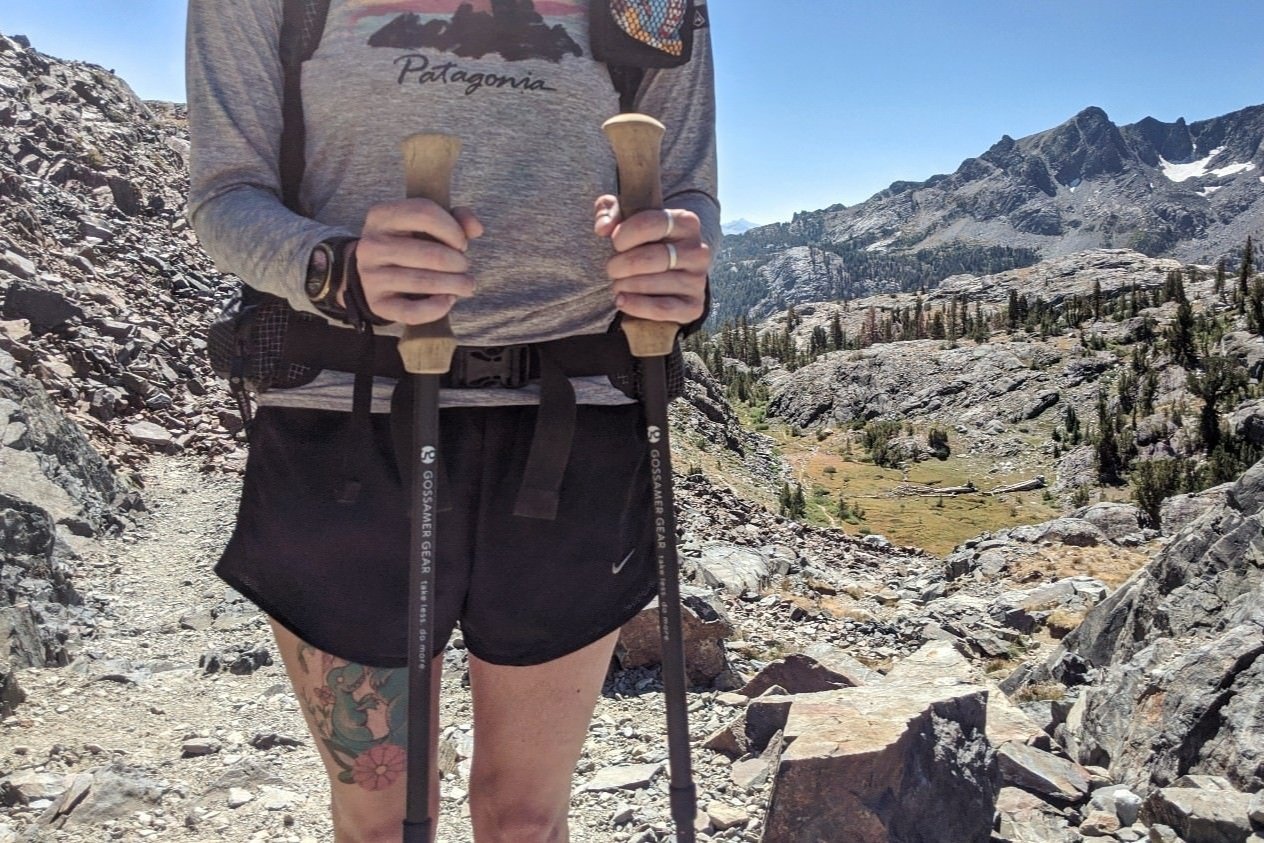
PLB (Personal Locator Beacon)
A personal locator beacon is a device that can be used to send a GPS emergency signal from the wilderness in areas without cell phone reception. If you’re ever deep in an isolated wilderness and you need emergency help, a PLB could save your life. The main downside with locator beacons is they tend to be pretty expensive and require a subscription, but their upsides are worth it in our opinion – especially when hiking in truly remote locations. We like the Garmin InReach Mini, which allows us to message with loved ones and can a search and rescue if necessary.




